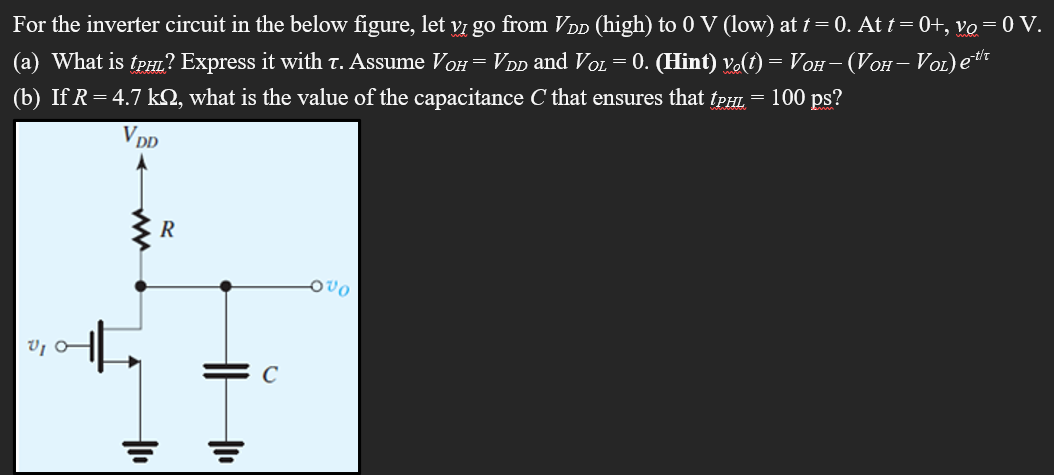For the inverter circuit in the below figure, let vI go from VDD (high) to 0 V (low) at t = 0. At t = 0+, vO = 0 V. (a) What is tPHL? Express it with τ. Assume VOH = VDD and VOL = 0. (Hint) vo(t) = VOH − (VOH − VOL)e −t/τ (b) If R = 4.7 kΩ, what is the value of the capacitance C that ensures that tPHL = 100 ps?
